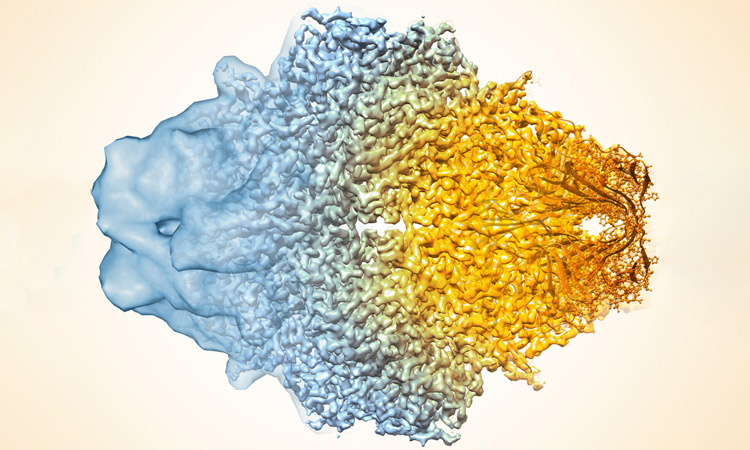Shengjie Feng is an expert in how to leverage the powers of cryo-EM. “My research is truly interdisciplinary,” she says. “I believe that the strong cryo-EM core facility, drug discovery, cancer research and neuroscience research at Sanford Burnham Prebys will play a crucial role in advancing my work.
Previously, Feng was a postdoctoral scholar at Howard Hughes Medical Institute and UC San Francisco, where she worked with biophysicist Yifan Cheng, MD and neuroscientist Lily Jan, PhD.
Feng earned her PhD in neuroscience at the Institute of Neuroscience, part of the Chinese Academy of Sciences, where she used mouse models to understand the mechanisms and functions of membrane proteins and ion channels during neural development and disease.
Techniques and Technologies
Electron Cryo-Microscopy, Ion Channels
Cryogenic electron microscopy (cryo-EM) is science’s view of the future, or more precisely, a look at life at the smallest of scales. The imaging technology uses the very tiny wavelengths of electrons (much shorter than the wavelengths of light) to make clear images of equally tiny things.
Feng focuses on the creation and characteristics of ion channels, both in healthy cells and in disease conditions. Ion channels are protein molecules that span the cell membrane, allowing passage of ions (atoms or molecules with a net electric charge, such as sodium, calcium and potassium) from one side of the cell membrane to the other, from outside in or inside out. They are critical to cellular operations, including facilitating communications between cells. Feng has specifically studied ion channels in neural cells.
“We perceive the outer world and construct our inner world through neural circuits in our brain,” she says. “While neurons are the fundamental unit of information integration, responsible for all cognitive behaviors, ion channels serve as the molecular foundation of the electrical signaling that facilitates cell-cell communication. The coordinated opening and closing of these molecules generate a continuous wave of electrical signals throughout the nervous system, which underlies our perception and cognition.
More broadly, Feng notes that ion channel dysfunction is associated with a wide range of diseases, including epilepsy, muscle tension, diabetes and various types of cancers.
 Feb 7, 2024
Feb 7, 2024Speaking of International Day of Women and Girls in Science
Feb 7, 2024Designated by the United Nations, the 9th International Day of Women and Girls in Science is Sunday, February 11, preceded…
 Jan 16, 2024
Jan 16, 2024Shengjie Feng channels the powers of cryogenic electron microscopy
Jan 16, 2024New Sanford Burnham Prebys researcher seeks to illuminate the hidden recesses and secrets of cellular and molecular biology Cryogenic electron…
 Nov 2, 2023
Nov 2, 2023La Jolla’s Sanford Burnham Prebys adding six scientists in hopes of launching new era of collaboration
Nov 2, 2023The newcomers, brought in with help from a $70 million donation, are versed in different technologies that can be applied…
 Aug 2, 2023
Aug 2, 2023Big Data. Bigger Opportunities.
Aug 2, 2023New and rapidly developing technologies, such as cryo-electron (cryo-EM) and artificial intelligence, are providing the tools to revolutionize biomedical research,…
